Why is specific grip training for BJJ so important? If your grips fail, all your technique goes out of the window. It becomes hard to execute anything.
This article will show you how to develop grip strength specifically for BJJ. I’ll break down grip training into five key areas based on BJJ hand movements. I’ll provide example exercises for each, as well as an explanation of their benefits.
A note on sets and reps: unless otherwise mentioned, you should look to perform 3 sets of 60 seconds before progressing for holding exercises. For rep based exercises look to build up to 3 sets of 15 reps before progressing.
1. Gripping and Holding an Opponent in a Static Position
This develops overall strength and muscular endurance in the hands and forearms. Here are three exercises you can try:
- Thick bar holds: Thick bars are harder to hold and require more strength in the forearms. Get a thick bar or place Fat Gripz over some dumbbells/kettlebells and hold for time. Start with about 50% of your body weight.
- Bar holds: Position yourself underneath a bar with your feet on the ground. Place your body at a 45-degree angle to the ground and hang at that angle. As you get stronger, you can move your body so it’s more under the bar. This will increase the weight on your arms until you can hang from a pull up bar.
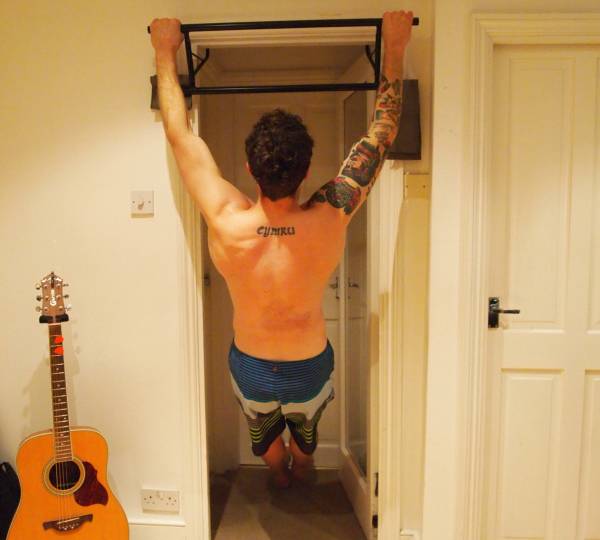
- Towel, Gi or belt holds: These recruit more muscle fibers and are more BJJ specific. Given the angle of the grip, they involve a greater contraction of the finger flexors to hold onto the towel, gi or belt, plus they bring the thumb into action. A much better grip exercise than just holding the bar, but you can follow the same gradual progression principles as above.
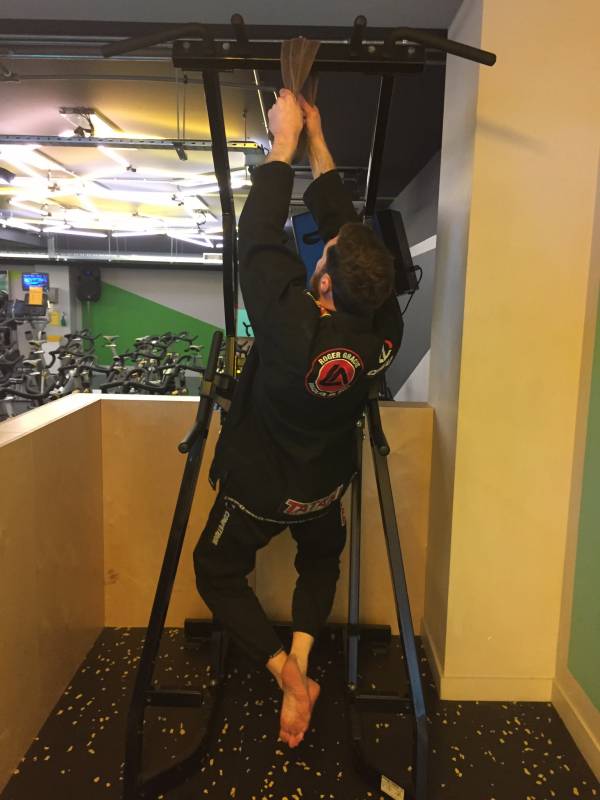
2. Gripping an Opponent in Multiple Directions
Isometric holds give you a base of muscular endurance, although your opponent will rarely stay still. Here are four effective options:
- Gi-sleeve kettlebell swings: This is a great way to replicate playing spider guard and the unique hook you create with your fingers. Get an old gi, cut off one of the sleeves at the shoulder, and feed it through the kettlebell. Hold on to each end of the sleeve just using your fingers. To perform the exercise, pick a kettlebell weight that is 50% of what you normally use.
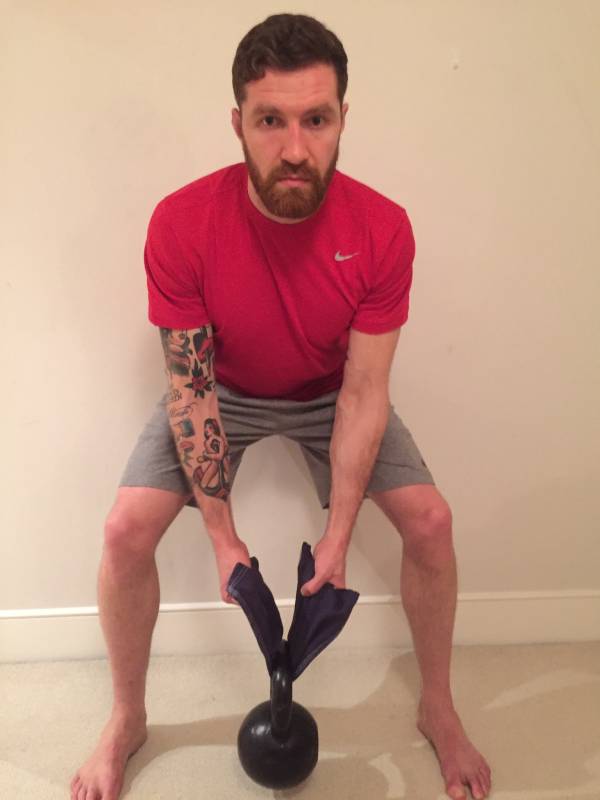
- Viking holds: Take a kettlebell in one hand and hold it upside down for time. (I was watching the series Vikings when I thought of this exercise and decided it mimicked a Viking holding an axe above the shoulder.) This is a great exercise for forearm and wrist strength as when the heavy end of the kettlebell is pointing up in the air you have to fight its movement with a strong grip. Practice this first for sets of ten seconds with a light kettlebell to get the hang of it. You don’t want to drop the kettlebell.
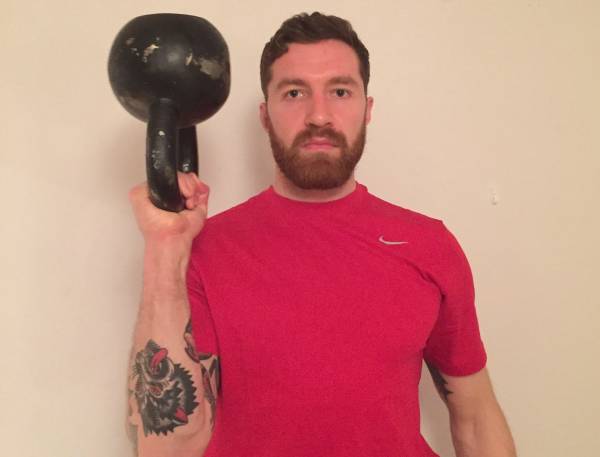
- Wrist rollers: This is an old school grip exercise that often gets overlooked, but it is fantastic at building a balanced muscular endurance in the finger extensor and flexor muscles. All you need is a stick, some rope, and a weight attached to the end. Start with a light weight (about one to two kilos). Hold your arms out straight at shoulder height. Use a twisting motion with your hands to wind the weight up to the stick. Then, reverse your twist and lower the weight in a controlled motion back to the floor. Whether you are twisting the stick by turning your hands toward or away from you, do the opposite on your next set to achieve balance.
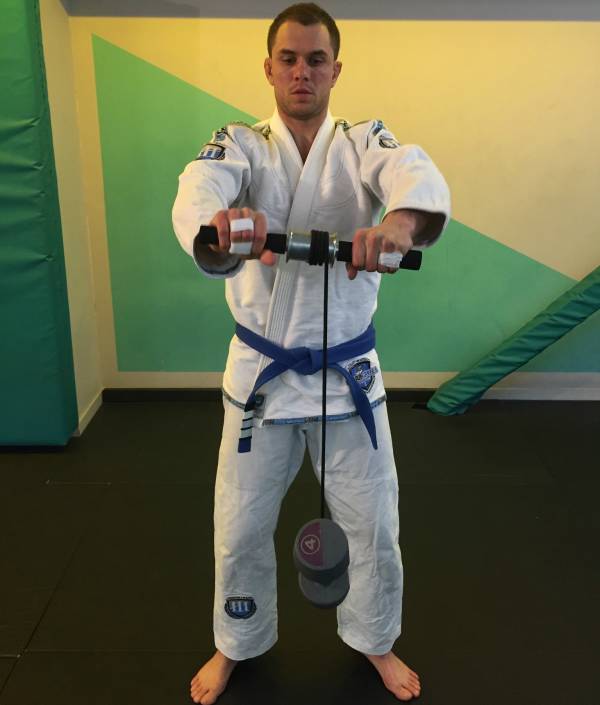
3. Gripping and Pulling an Opponent Close to You
If your biceps and back are not strong enough to perform these movements repeatedly you have a weak link in the chain.
- Towel or gi pulling exercises: Options include placing a towel or gi over a pull up bar and perform pull ups or horizontal rows or placing a towel or gi through the handles of a cable machine, gripping the towel or gi, and performing seated rows. The beauty of this exercise is that you are incorporating grip work into your pulling exercises during your workout, making your time more effective. Ensure the reps are slow and controlled, two seconds up/in and two seconds down/back. Explosive reps will concentrate the work on the initial pulling motion, you want the muscles to work throughout the entire motion to build endurance.
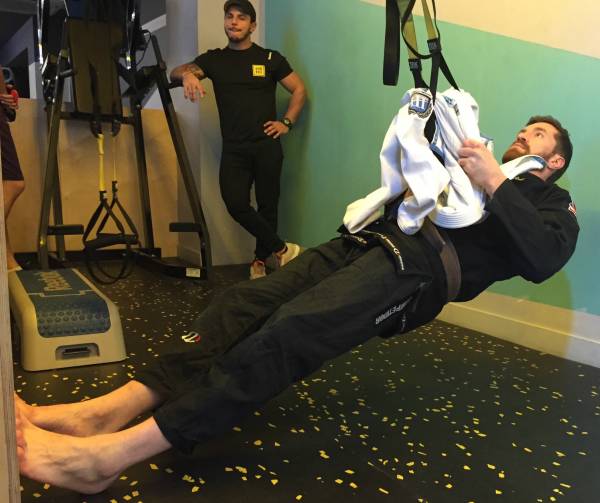
- Isometric pull up holds: This replicates how you hold an opponent tightly to you, like when you’re on top in side control. Use a neutral grip, palms facing each other. Using gymnastic rings, a suspension trainer, or a towel or gi over a bar, pull yourself up and hold. Start with a horizontal bar with your feet on the ground and choose the body angle that allows you to perform holds of 30 seconds for 3 sets and build from there.
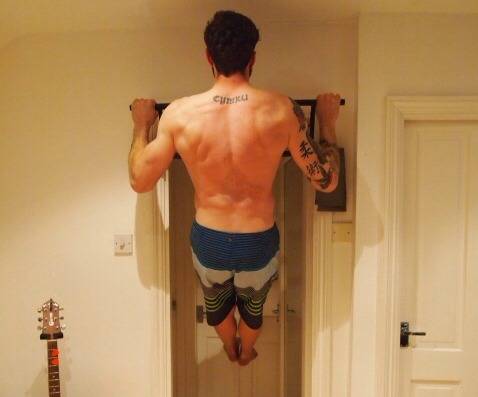
4. Pushing Away With a Flat Palm When Escaping
Though it doesn’t involve grip, this situation warrants training as it highlights the wrists and the need to strengthen them to avoid injury.
- Handstands: If you can hold your entire body weight on your hands for more than a minute, your wrists should be plenty strong. I perform sets with my feet against the wall and hold for time. My current goal is two minutes.
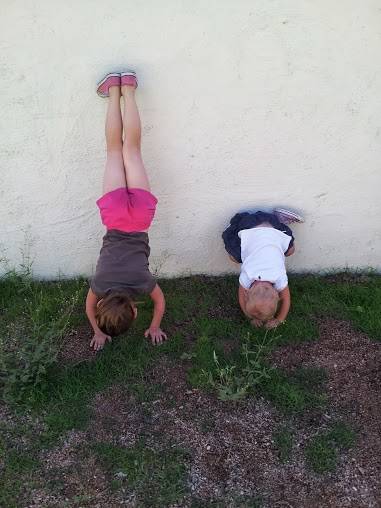
5. Pre-hab for Injury Prevention
In BJJ, your fingers can take a beating and you perform lots of hand closing. Therefore, it is important to strengthen the fingers and the opening motion of the hand.
- Finger tip push ups: By doing these on your fingertips, you’re placing your fingers under constant tension which will develop strength in the tendons. Get into a push up position with your knees on the floor. Spread your fingers out wide and press only the tips of your fingers and thumbs into the floor. Shift your weight onto your hands until you feel comfortable enough to then take your knees off the floor and get into a full push up. Perform a normal push up, except holding your weight in your fingers. When you can do 2 sets of 10, you should move your knees back until eventually you’ll be doing full fingertip push ups. When performing these, keep your fingers and thumbs as straight as possible and do not allow them to bend too much and put pressure on the joints.
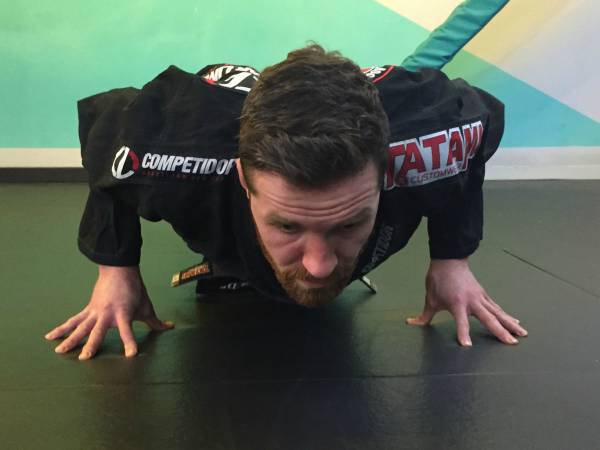
- Banded finger extensions: This involves wrapping a rubber band outside your thumb and fingers, then opening your hand against the resistance. I found my bands through Ironmind. You will rarely open the hand against a high level or resistance so stick with high rep exercises. Choose a band that you can perform 50 continuous reps with, then build up to 100 reps before progressing to a thicker band. 1 set of 50-100 reps at the end of each grip workout should be sufficient.
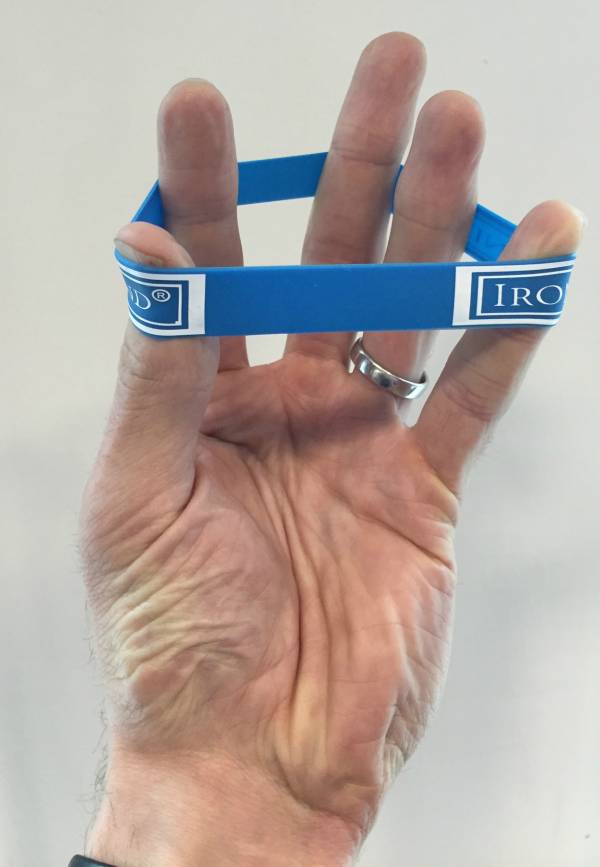
Approaching Grip Training for BJJ
Remember you are not training to become a grip strongman. You’re trying to build strength and muscular endurance, not trying to develop maximum crushing strength. Therefore, don’t use overly heavy weights. Build up slowly and never work to exhaustion. Two to three focus exercises twice per week should be sufficient. Also when performing hangs, keep your shoulders engaged and never fully lock out your elbows. This reduces the strain on your joints.
“Why is specific grip training for BJJ so important? If your grips fail, all your technique goes out of the window. It becomes hard to execute anything.“
Performing these exercises in addition to your BJJ and strength and conditioning is going to give you better control over your opponent, allowing you to better execute your techniques, as well as help protect against injury in the hands, wrists, and elbows. But remember, while a strong grip facilitates technique in BJJ, it will never replace it. Technique comes first.
Check out these related articles:
- How to Build Grip Strength for BJJ
- Grip Strength for Lifters, Climbers, and Fighters
- The 3 Types of Grip Strength and the 8 Ways to Train Them
- What’s New On Breaking Muscle Today






